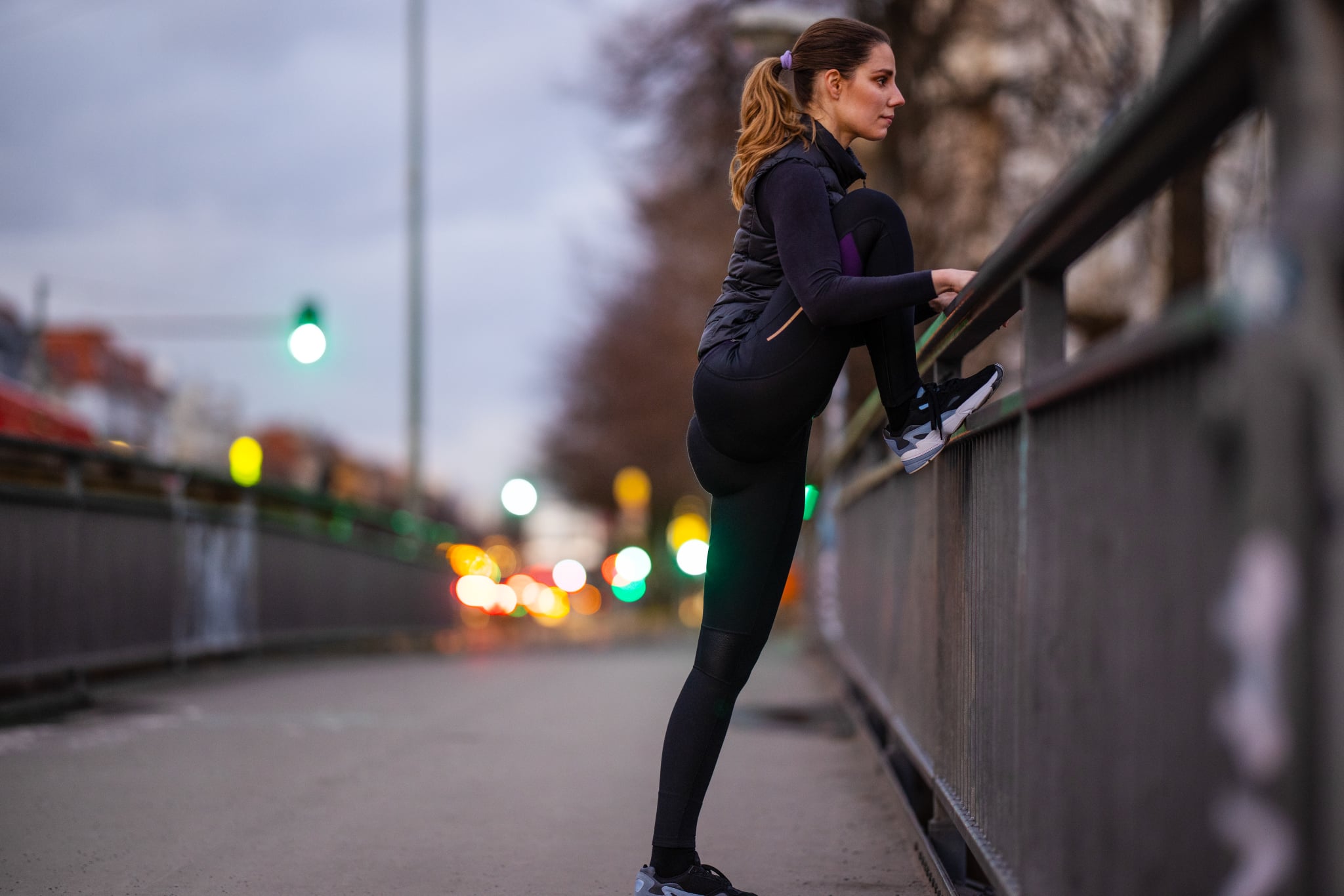It’s hard to compete with the amazing post-workout feeling of bliss many athletes experience. The release of endorphins after a hard run, intense HIIT workout, or strength workout feels so energizing, but what doesn’t feel so great is the frequent calf soreness and tightness experienced afterward. Sure, they might be small, but your calves are mighty, and when they’re unhappy, it’s easy to feel that stiffness radiate up the rest of your body. Calf tightness is very common — if you know, you know — but thankfully, there are solutions. POPSUGAR spoke with two experts to get the dish on why people experience calf tightness and how to combat this issue quickly and effectively.
What Causes Calf Tightness?
The main culprit behind calf tightness is overuse or underuse of the muscle, according to Bhavik Sheth, PT, DPT, who focuses on orthopedic and sports injury and prevention. “The calf muscle is really two muscles, the gastrocnemius and the soleus,” Dr. Sheth explained. “The job of the calf muscle is to propel the body during movements such as running and jumping, and the muscle stretches during movements such as squatting. People usually feel tight in the calf when they overdo an exercise or if they have not exercised for a while and do too much too quickly.”
In addition to overuse or underuse, a less common explanation for calf tightness could be sciatica, a condition that can cause feelings of tightness around the lower leg due to compression of the sciatic nerve. Additionally, if you’re someone who often wears high heels around town, that can also be a cause of calf tightness.
How Do You Reduce Calf Tightness?
The simple way to get a handle on tight calves is through exercise. Dr. Sheth recommends strengthening exercises for the lower body to help train the calf muscles, as well as doing calf stretches prior to exercising. Yoga positions such as Downward Dog can help stretch out tight calves, and exercises like squatting, running, and jumping rope can help build up calf strength.
In some situations, physical therapy can also be helpful in targeting specific calf strain. If you don’t have access to physical therapy, there are some at-home exercises you can try. Sebastian Ko, MD, an orthopedic surgeon at Weiss Memorial Hospital, suggests using stairs or a ledge to stretch out your calves. He recommends standing on the ball of your foot with your heels slightly off the edge of the step, and “letting the heel ‘fall’ towards the floor.” Alternate one side at a time for one minute on each side, repeating three times per side. Be sure to hold onto something for balance if needed. “Consistency is key,” Dr. Ko said of overcoming calf tightness.
The main thing to remember when treating calf tightness is to feel the stress of the exercise or stretch in the middle portion of the muscle between your knee and your heel. “Experiencing stress at either end of the muscle near the joints means you need to readjust as there is a risk of developing tendonitis,” Dr. Sheth explained.
Some other at-home methods to reduce calf tightness include foam rolling or a cold or hot massage on the calves to release some of the soreness.
What Are the Potential Impacts of Calf Tightness?
Calf tightness is not something to ignore or overlook. According to Dr. Ko, the longterm issues are poorer gait biomechanics (which impacts your patten of walking and posture), Achilles tendon issues, and chronic calf pain.
Dr. Sheth also pointed out that having tight calves reduces the amount of force your legs can generate, which may lead your body to overcompensate and generate that force from another part of your body when you’re working out. Because of this, having tight calves can make a variety of exercises, including running, walking, and squatting, more difficult.
We work our calves with literally every step we take, which is why it is important to address tightness as early as possible with physical therapy, stretching, or at-home exercises so you can continue to crush your physical goals.

I appreciate the practical advice you’ve given here.
766797 751408Enjoyed reading this, quite great stuff, thankyou . 885477
95288 675001I believe this is among the most significant information for me. And im glad reading your post. But want to remark on some common points, The internet internet site style is ideal, the articles is actually excellent : D. Good job, cheers 776610